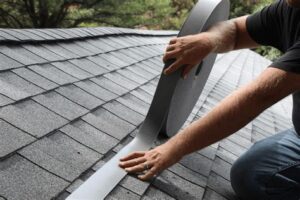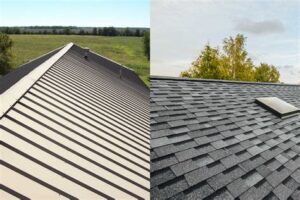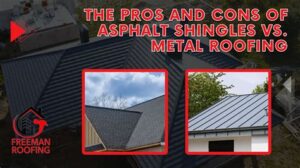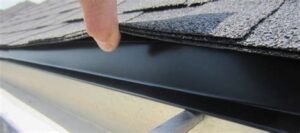When it comes to choosing the right roofing material for your home, the decision between shingle roofs and metal roofs can be puzzling. With various factors influencing both costs and benefits, it’s essential to understand what each option offers. In this comprehensive guide, we will dive deep into the intricacies of shingle roof and metal roof costs, advantages, and maintenance requirements. From a complete breakdown of expenses to a detailed comparison of installation costs, you will gain invaluable insights that can help you make an informed choice. Whether you prioritize upfront affordability or long-term value, we’ll explore the lifespan and upkeep of both materials, ensuring you’re equipped with the knowledge you need to choose the best roofing solution for your needs. Join us as we unravel the key advantages of metal roofing over traditional shingles and provide answers to frequently asked questions.
Understanding Shingle Roof Costs: A Complete Breakdown
When considering roofing options, understanding the costs associated with shingle roofs is essential. This section provides a complete breakdown of the various factors that influence the overall expense of shingle roofing. The costs can vary significantly based on materials, labor, and other considerations.
Materials Costs
The price of shingle roofing materials typically ranges from $90 to $1000 per square, depending on the type of shingles chosen. Here’s a brief overview of popular types:
| Type of Shingle | Cost per Square | Lifespan |
|---|---|---|
| Asphalt Shingles | $90 – $100 | 15-30 years |
| Wood Shingles | $200 – $300 | 20-25 years |
| Slate Shingles | $600 – $800 | 50+ years |
| Metal Tiles | $900 – $1000 | 40-70 years |
Labor Costs
Labor costs for shingle roof installation can vary widely based on location, with an average hourly rate ranging from $50 to $100. Most roofing projects require about 10-20 hours of labor per square, adding another considerable amount to the total costs. It is important to choose a qualified contractor to ensure proper installation.
Additional Costs
In addition to materials and labor, other costs may come into play:
- Permits: Local building codes might require permits, which can add $50 to $500.
- Old Roof Removal: The cost to remove an existing roof is usually $100 to $150 per square.
- Underlayment and Flashing: Quality underlayment and flashing can add $45 to $70 per square.
Conclusion
When considering a roofing project, it is crucial to account for all these factors. Understanding the complete costs associated with shingle roofs ensures you are well-informed and can budget accordingly.
Metal Roof Advantages: Long-Term Financial Benefits
When considering roofing options, the long-term financial benefits of metal roofs are significant. While the initial investment may be higher compared to traditional shingle roofing, the longevity and durability of metal roofs often lead to substantial savings over time.
| Factor | Metal Roof | Shingle Roof |
|---|---|---|
| Average Lifespan | 40-70 years | 15-30 years |
| Maintenance Costs | Low | Higher |
| Energy Efficiency | Highly efficient; potential savings on bills | Less efficient |
| Resale Value | Increases home value | Minimal impact |
One of the most compelling reasons to choose a metal roof is its A Complete resistance to weather extremes. Metal roofs can withstand wind, hail, and snow better than shingles, which means fewer insurance claims and repairs. Additionally, due to their reflective properties, they help keep homes cooler during hot summers, further contributing to lower energy bills.
Moreover, many homeowners and builders are becoming increasingly aware of the sustainability and recycled materials often used in metal roofing. Choosing a metal roof not only benefits the wallet but also aligns with eco-friendly practices, which can be a major selling point when it comes time to resell the property.
The long-term financial benefits of metal roofing—when combined with its durability, low maintenance, and energy efficiency—make it a wise investment for homeowners looking for lasting value. Choosing metal over shingles can lead you to substantial savings and peace of mind.
Comparing Installation Costs: Shingle Vs Metal Roof
When evaluating roofing options, one of the most significant factors to consider is installation cost. Both shingle and metal roofs have distinct pricing structures that can influence your overall budgeting. Understanding these costs can help homeowners make informed decisions that align with both their financial situation and long-term goals.
The average installation cost for a shingle roof typically ranges from $3 to $5 per square foot. This price can vary based on the type of shingles selected, local labor rates, and the complexity of the roof design. Asphalt shingles, being the most common choice, usually fall at the lower end of this spectrum, while architectural shingles may cost more due to their enhanced durability and aesthetics.
In contrast, metal roofs generally come with a higher initial price tag, with installation costs ranging from $7 to $12 per square foot. This higher cost can be attributed to the materials used, specialized equipment, and skilled labor required for proper installation. Furthermore, variations such as metal type (steel, aluminum, or copper) and panel style (standing seam, corrugated, or shingles) can also affect cost.
It’s essential to keep in mind that these figures only reflect the initial installation expenses. While shingle roofs might present a lower upfront cost, their potential need for more frequent repairs and replacements can make them more expensive over time. In contrast, metal roofs may require a greater investment at the outset, but their longevity and durability can yield significant savings in maintenance and replacement costs.
A Complete analysis of installation costs involves not just the initial outlay but also future financial implications. Homeowners should weigh the cost of installation with potential long-term benefits, ensuring the choice made is both economically and practically beneficial in the years to come.
Lifespan and Maintenance: A Complete Overview of Both Options
When evaluating roofing options, one of the critical factors to consider is the lifespan and maintenance requirements of each roofing type. Understanding these aspects can help homeowners make informed decisions that align with their long-term goals and budget.
Shingle roofs, typically made of asphalt, have a lifespan of about 15 to 30 years, depending on the quality of the materials and local climate conditions. They require regular maintenance, including periodic inspections and potential repairs to prevent leaks and issues arising from algae growth or storm damage. The maintenance costs can add to the overall expense of owning a shingle roof, particularly if proactive measures aren’t taken.
In contrast, metal roofs are known for their impressive longevity, often lasting 40 to 70 years or more with minimal maintenance. This extended lifespan is a significant advantage, as it means fewer replacements and lower overall costs in the long run. Maintenance for metal roofs primarily involves keeping the surface clean and checking for any loose fasteners or seams. Regular inspections every few years can help catch potential issues early without significant expenses.
Overall, while shingle roofs may have a lower initial installation cost, the potential for more frequent replacements and higher maintenance fees can shift the financial advantage towards metal roofing over time. Choosing a roof that aligns with your maintenance preferences and budget considerations is crucial for long-term satisfaction and sustainability.
Benefits of Choosing Metal Roofing Over Shingles
When considering the roofing options for your home, it’s essential to weigh the A Complete range of benefits that metal roofing offers in comparison to traditional shingles. Here are some key advantages of opting for metal roofs:
- Durability: Metal roofs can withstand severe weather conditions, including high winds, heavy rain, and hail. Unlike shingles that may crack or wear out, metal roofs are built to last.
- Longevity: With an average lifespan of 40 to 70 years, metal roofs significantly outlast shingle roofs, which generally need replacement every 15 to 30 years.
- Energy Efficiency: Metal roofs reflect solar radiant heat, which can reduce cooling costs in hotter climates. Many metal roofing materials also come with insulation options for enhanced energy performance.
- Low Maintenance: Once installed, metal roofs require minimal maintenance compared to shingles, which may need regular inspections and repairs due to their susceptibility to weather damage.
- Eco-Friendly Options: Many metal roofing materials are made from recycled materials and are themselves recyclable at the end of their lifespan, making them more sustainable than asphalt shingles.
- Fire Resistance: Metal roofs are non-combustible and often receive higher fire ratings compared to shingles, providing greater safety for your home.
With these advantages in mind, many homeowners are increasingly considering metal roofing as a viable alternative to traditional shingles. The long-term benefits and potential savings can often outweigh the initial investment, making metal roofs a compelling choice in today’s market.
Frequently Asked Questions
What are the main differences between shingle roofs and metal roofs?
The main differences include material composition, longevity, cost, maintenance requirements, and insulation properties. Shingle roofs are typically made from asphalt or wood and are less expensive but have a shorter lifespan. Metal roofs, on the other hand, are made from steel, aluminum, or copper and tend to last longer, offer better durability, and require less maintenance.
How do the costs of shingle roofs compare to metal roofs?
Shingle roofs are usually more affordable upfront, typically ranging from $90 to $100 per square. Metal roofs, while more expensive initially, ranging from $300 to $800 per square, can save money in the long run due to their longevity and lower maintenance costs.
What are the environmental benefits of choosing a metal roof?
Metal roofs are often made from recycled materials and are 100% recyclable at the end of their lifespan. They also reflect heat, which can lead to lower cooling costs, and their durability means fewer materials are used for replacements, decreasing waste.
What maintenance do shingle roofs require compared to metal roofs?
Shingle roofs often require regular inspections for missing or damaged shingles and may need to be replaced more frequently. Metal roofs require less maintenance, typically just periodic inspections, cleaning, and potential repainting or sealing to prevent rust.
Can you install shingles over an existing roof?
Yes, shingles can often be installed over an existing roof in some cases, but this practice is subject to local building codes and the condition of the existing roof. Metal roofs usually require a solid and stable underlayment, which might necessitate removing previous roofing layers.
Which roofing option is better in extreme weather conditions?
Metal roofs generally perform better in extreme weather conditions due to their durability and resistance to wind and hail. Shingle roofs can be more prone to damage in storms but may provide better insulation during colder weather if properly installed.
How does the aesthetic appeal differ between shingle roofs and metal roofs?
Shingle roofs offer a classic and traditional look with a variety of styles and colors, making them popular in residential neighborhoods. Metal roofs, while often associated with commercial buildings, are now available in a range of designs that can complement various architectural styles, providing a modern and sleek appearance.





